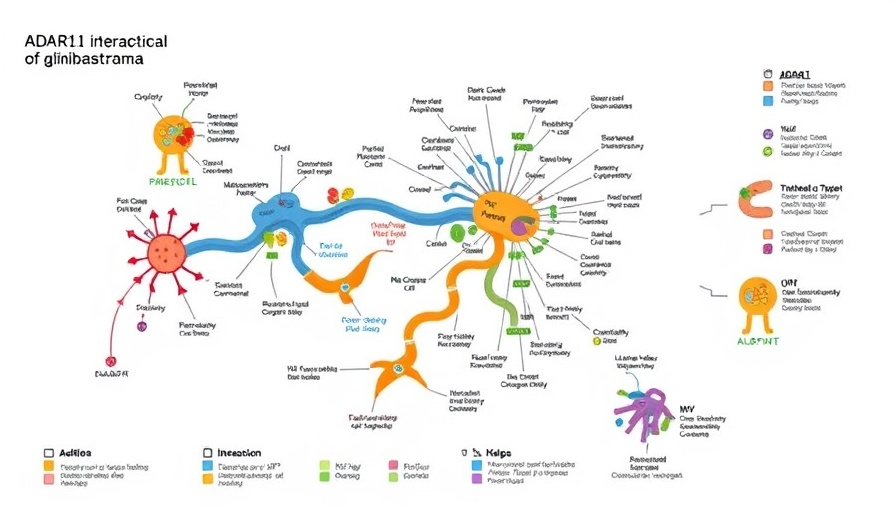
Unlocking Potential: The Role of ADAR1 in Treating Glioblastoma
In a groundbreaking study, researchers have unearthed a novel mechanism within cancer cells that presents a potential new avenue for treating glioblastoma, one of the most aggressive forms of brain cancer. Led by Dr. Ángel Álvarez-Prado at the University of Lausanne, this research zeroes in on a protein called ADAR1, which plays a dual role when inhibited—slowing the growth of cancer cells and activating the immune response to target the tumor.
Understanding Glioblastoma: A Deadly Challenge
Every year, over 3,200 people are diagnosed with glioblastoma in the UK alone. Despite conventional treatment options such as surgery, radiotherapy, and chemotherapy, the prognosis remains grim, with average survival times of just 12-18 months post-diagnosis. The disease’s complexity calls for innovative treatment strategies that can address its multifaceted nature. The recent findings regarding ADAR1 mark a significant step forward in this ongoing battle.
The Mechanism of Action: What Happens When ADAR1 is Blocked?
Dr. Álvarez-Prado’s investigations demonstrated that blocking the ADAR1 protein not only decelerated tumor cell proliferation but also rejuvenated the immune system's ability to recognize and combat these malignant cells. This dual effect is particularly promising, as it could pave the way for therapies that enhance the efficacy of existing treatments while also minimizing the side effects that often accompany standard protocols.
Real-World Implications: Promising Therapeutic Developments
This research, which is still in its early stages, is already generating interest for its potential to influence clinical practices in oncology. As Dr. Álvarez-Prado evaluates various ADAR1-inhibiting drugs, he aims to transition these lab-based discoveries into real-world therapies that could significantly alter the trajectory of glioblastoma treatment.
Why is Targeting ADAR1 Significant?
By precisely targeting ADAR1, researchers are not only outmaneuvering the tumor's defenses, but they are also facilitating an environment where the immune system can do its job more effectively. Dr. Simon Newman from The Brain Tumor Charity underscores the importance of recognizing weaknesses within tumor cells. This strategic approach is vital in the immediate pursuit of treatments that are both innovative and necessary.
Future Predictions: A Hopeful Outlook for Patients
If Dr. Álvarez-Prado's findings can be replicated in clinical trials, this research could herald a new era for glioblastoma patients. It could represent the first substantial advancement in treatment methodologies since 2007, potentially granting hope to those grappling with this dire diagnosis. Researchers emphasize the importance of continued funding and support for such initiatives to fast-track innovations that can change patient outcomes.
A Call for Community Engagement in Cancer Research
The community's role in advancing cancer research cannot be overstated. Organizations like The Brain Tumor Charity are essential to supporting researchers like Dr. Álvarez-Prado, in making promising discoveries available to patients. Engaging in health and wellness initiatives is not just about awareness; it's about empowering those affected by these cancers to champion research and funding efforts that could catalyze transformative treatments.
In conclusion, as we stand poised on the brink of potentially groundbreaking therapeutic strategies against glioblastoma, it becomes critical for stakeholders—from academic institutions to patients and advocates—to rally together. Supporting research initiatives that probe further into the complexities of cancer biology could well alter the landscape of treatment, yielding better prospects for patients everywhere. Join the movement and advocate for further investigations into promising treatments like those targeting ADAR1.
 Add Element
Add Element  Add Row
Add Row 



Write A Comment